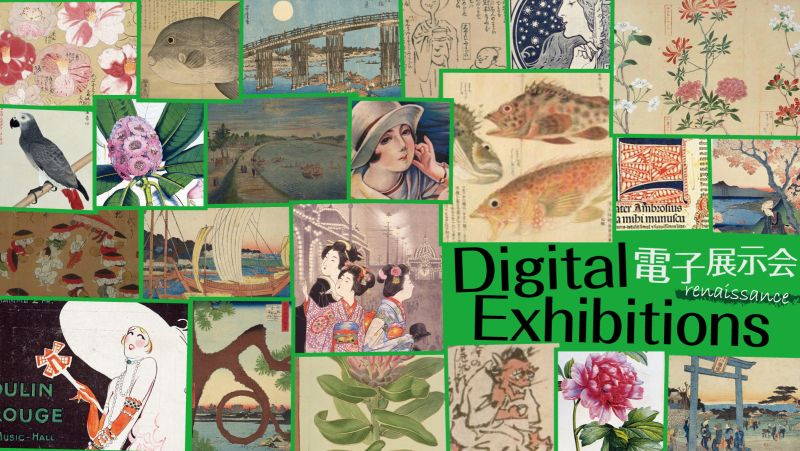Cherry blossoms in Kyoto depicted in nishiki-e

The cherry blossom front is heading north across the Japanese archipelago. Cherry blossoms are blooming all over the country and hanami (cherry blossom viewing) season has arrived, and here we would like to introduce you to Kyoto's cherry blossoms as depicted in nishiki-e. Many of the locations depicted are still famous hanami spots today. When you visit these places, comparing them with the scenery depicted in many nishiki-e may be fun.
Arashiyama
Arashiyama has been a famous spot for its autumn foliage since Kyoto became the capital in the Heian period (794). Arashiyama is said to have become famous for its cherry blossoms after retired Emperor Gosaga transplanted mountain cherry trees from Yoshino in 1255 (Kencho 7).
Higashiyama
In the Muromachi period, the eighth shogun, Ashikaga Yoshimasa (1436-1490), held a sumptuous hanami party at Higashiyama. During the Edo period (1603-1867), hanami became popular among the general public, and many famous places developed in the Higashiyama area. This webpage introduces nishiki-e of Kiyomizu-dera Temple, Yasaka Shrine (Gion Shrine), and Otani Honbyo Temple. The following nishiki-e depict the cherry-tinted Kinunkei Valley as seen from the stage of Kiyomizu-dera Temple.
Kyoto Gosho (Kyoto Imperial Palace)
During the Heian period (794-1185), some aristocrats planted cherry blossoms in their residences. A representative example of them is “Sakon no Sakura (the cherry tree of Sakon)” in the Kyoto Imperial Palace. This webpage introduces the cherry blossoms of the Kyoto Imperial Palace.
Omuro
The last of the cherry blossoms in Kyoto is the Omuro-zakura at Ninna-ji Temple, known for its late blooming. The cherry blossoms cover the ground like a sea of clouds due to the relatively short height of the trees.
In addition to the locations mentioned here, Kyoto has many other famous hanami spots, including Nishiyama in Rakusai, Daigoji Temple (known for Toyotomi Hideyoshi's hanami party), Yamashina, and the area along the Uji River.
In the old days, Hanami was also called "Sakuragari (cherry blossom hunting)," and people went to the mountains and fields to appreciate the beauty of cherry blossoms. Hanami was originally a pastime for the aristocracy, but eventually, it spread to the samurai class, and later even ordinary people began to enjoy it. Surrounded by mountains, Kyoto may still have hidden places for cherry blossom hunting.
